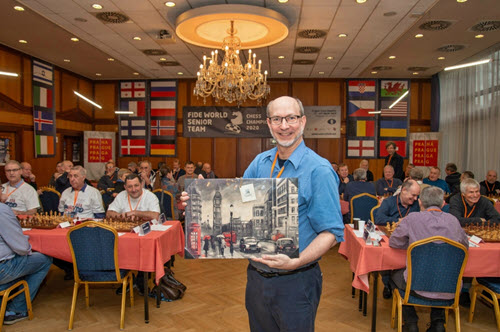
GM Joel Benjamin
Should we be afraid now? Five games into the World Championship we have not seen a decisive game, after the two games since the break, games four and five, ended in fairly short draws.
I’ve always felt it was bad luck to play chess on your birthday. My personal experience has been grim. My last birthday game didn’t end in disaster—a draw with Felix Levin in a winning match for the U.S. Seniors—but Donald Trump ordered me to come home and the tournament shut down after the next round.
With a November 30th birthday, Magnus Carlsen already has experience playing World Champion chess on his anniversary. Though he lost to Wesley So while turning thirty last year, he admitted his overall experience hasn’t been too bad. He did after all finish off Karjakin with the glorious Qf4-h6+ sacrifice in the 2016 match on Nov. 30th. He just would have preferred here to be able to enjoy a token celebration, though he pointed out the right time to celebrate is after you win the match.
Carlsen opened right-handed in game four, testing Nepo’s defense to 1.e4. The Petroff’s was not likely a big surprise, as it is a common grandmaster choice when one wants to avoid losing. The game proceeded through known channels for a while, with Carlsen trying to inhibit Black’s development.
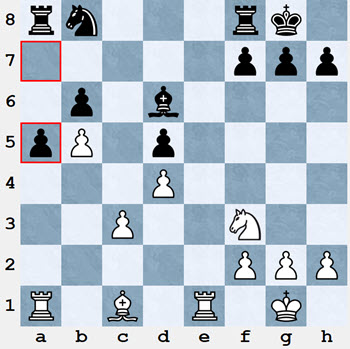
Nepo has just played 17…a5, transforming his backward a-pawn into a protected passed pawn. In three correspondence games White played the safe en passant capture, but with the position so liquidated there is not much to hope for. Carlsen innovated with 18.Nh4!?, beginning a clever regrouping to harass the isolated d5-pawn. The problem is that en passant is like Black Friday, here and then gone forever. Whatever happens, the a-pawn looms as a major source of counterplay. A handful of moves later, Carlsen found he wasn’t getting what he wanted out of the position.
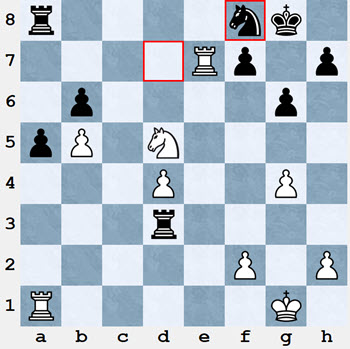
With 24…Nf8, the Black knight is forced to take a passive position for the foreseeable future. White cannot profitably snack on the b-pawn—25.Nxb6 Rb8 gets one right back. But the bind on the kingside should surely produce something for White? That’s what Magnus expected, but he found something different. The a-pawn, which White failed to remove in the French style, chugged along fast enough to bottle up White’s second rook. Without the additional attacker, White can’t break through, and the passed d-pawn has many eyes trained on it.So Carlsen made the obvious moves and settled in for a long think.
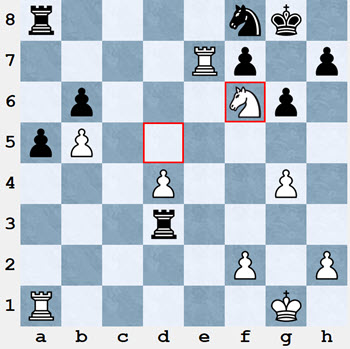
After half an hour Magnus repeated the position with a couple of knight checks and went back to his cogitation. I watched Anish Giri and Judit Polgar try to get inside Carlsen’s head and predict the future. Giri at first thought Magnus would continue with small but necessary moves like Kg1-g2 (getting off the back rank) and h2-h4 (bolstering White’s g5 point). Along the way, he could repeat the position with a pair of checks, inching towards the time control at move forty. If necessary, he could always take a draw by repetition. A plausible, professional course of action.
But as time ticked on Polgar explained why it wasn’t happening. Black has a range of possible moves, but nothing that would apparently spoil his position. White would likely have the tougher decisions to make.
One possible line is (move numbers after the repetition) 32.Kg2 a2 33.h4 Rda3 34.Re2 R3a7 35.d6 Ne6 (Black would have to avoid 35...Nd7? 36.Ne8+ Kf8 37.Nc7) 36.Rc2 h6 37.d7 Rd8 38.Rcxa2 Rxa2 39.Ne8+ Kg8 40.Rxa2 hxg5 41.hxg5 Nxg5, which is no risk for White but no win either. Perhaps even simpler is 33…Rd2, and it’s not clear what White does next. 34.d6 Ne6 lets the knight out of the cage, while 34.h5 gxh5 doesn’t get anywhere either.
Seeing your novelty fall so flat is a humbling birthday present. What went wrong? Let’s go back and check the videotape:
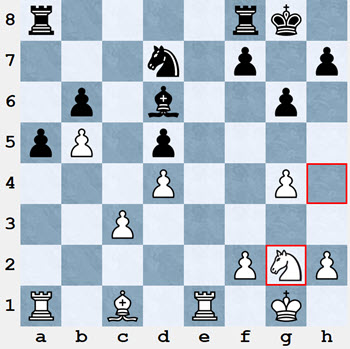
It wasn’t at all obvious that Nepo would react to White’s novelty as he did. In the position after 20.Ng2, Black has very plausible options. 20...Nf6 even looks likely. After 21.Bh6 (I don’t know if this was Carlsen’s intention) Black has two interesting exchange sacrifices: 21…Bxh2+ 22.Kh1 and now 22...Rfe8 23.Rxe8+ Rxe8 24.Ne3 Bd6 25.g5 Rxe3 26.fxe3 Ng4, or simply 22…Bd6 23.Bxf8 Kxf8. After 20…Rfc8 21.Bf4, Black could have tried 21…Bf8 as well. Carlsen said that in preparation he had analyzed several possibilities that looked risky for Black. Hopefully, we will eventually find out the details there. Perhaps the team focused on the wrong lines, letting Nepo’s choice slip under the radar.
The two players tend to act nonchalant about every draw, but I suspect Magnus was more than a little frustrated, while Ian had to be pleased, easily passing the first test in the Petroff.
Nepo repeated the same anti-Marshall from game three, but this time it was Magnus who varied with 8…Rb8 in place of 8…Bb7 (there is still time to see the other move, 8…b4). With 11…b4, Carlsen again chose the fourth most popular move in the position, apparently setting up the bold gesture 13…d5!?
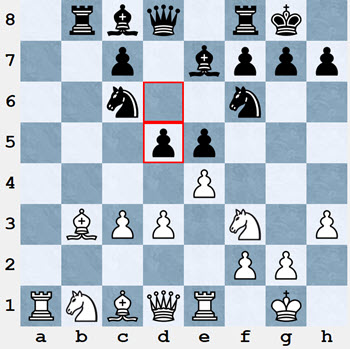
Carlsen would have enjoyed full compensation after 14.exd5 Nxd5 15.Nxe5 Nxe5 16.Rxe5 Be6, but Nepo smartly declined with 14.Nbd2, leaving Black with no good way to keep the tension in the center. Magnus still faced the challenge of how to activate his bishop and connect his rooks.
During the game, I wondered about a controversial solution to these problems, 17...Be6 (instead of Carlsen’s 17…Ne7).

This is a routine move when a pawn sits on d6, but here a capture produces doubled isolated pawns. On the other hand, Black achieves a few things in the short term.
Bc8-e6 could have been tried two moves later as well. The problem though is that the pawns would be a liability in the long-term, and Black could hardly expect to fully equalize. Magnus wanted more, and was on the cusp of escaping after 19…Qe8.
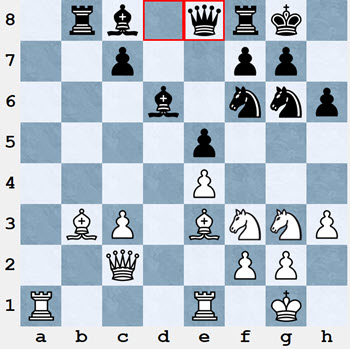
This was the key moment in the game, and Nepo, who played quickly to this point, had plenty of time to plan his next move. I’m honestly not sure what the best move is here, though 20.c4 has been suggested as the best course of action. It’s true that 20…Be6?! would run into 21.Ba4, and the pawn gets to c5 grabbing space nicely for White. Black would be better off answering 2ith 20…Qe6 or 20…Bb4. Nepo would still have a long way to go to outplay Carlsen, but the game continuation just traded pieces without creating any problems for the World Champion.
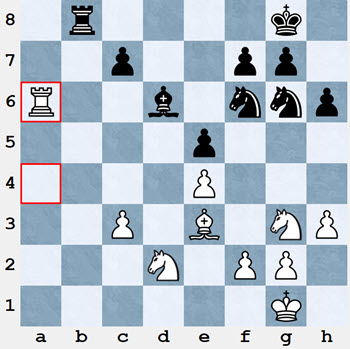
With 27...Ne8, Carlsen initiated a successful regrouping. He played quickly and confidently, envisioning an unbreakable fortress (even though he has said he doesn’t believe in those). Nepo achieved a cosmetic advantage of fixing Black’s pawns on dark squares, branding them as targets for a bishop ending that would never arrive. The knight on e6 is a monster, defending everything while keeping White’s bishop stuck protecting against an incursion on f4.
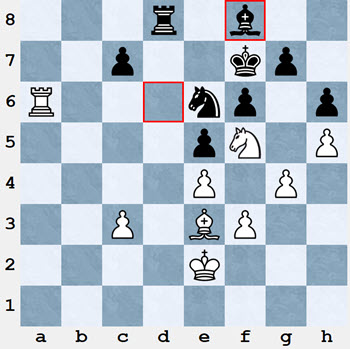
The draw was inevitable, with just a question of which repetition would the players contrive. Grandmasters have become adept at finding exceptions to move minimums and bans on draw offers. Today a little shuffling of the rooks ended the contest.
The games of this recap suggest a counterstrike for Nepomniachtchi’s preparation, as he equalized easily in game four and achieved a slight pull in game five. I would say that Magnus won the opening battle in the first batch of games, while the reverse was true here. Ian does not have the reputation of Carlsen’s one-time challenger Sergey “Minister of Defense” Karjakin, but it seems he has thus far been more confident neutralizing than prosecuting an advantage.
Comments